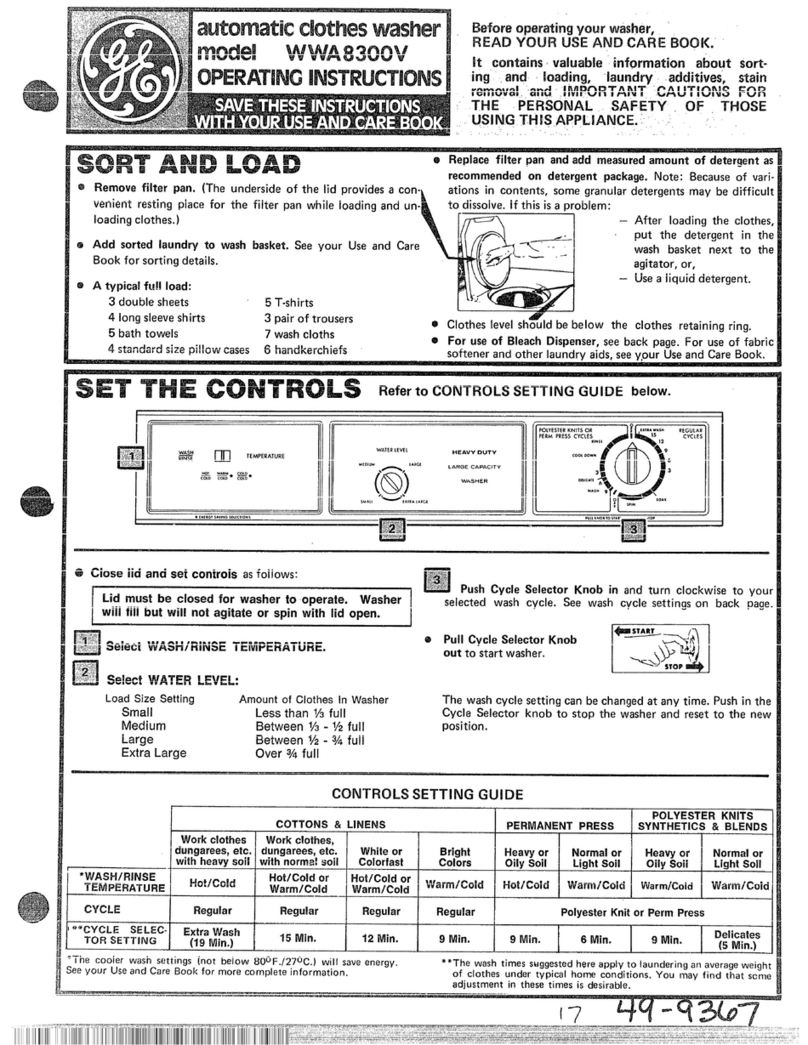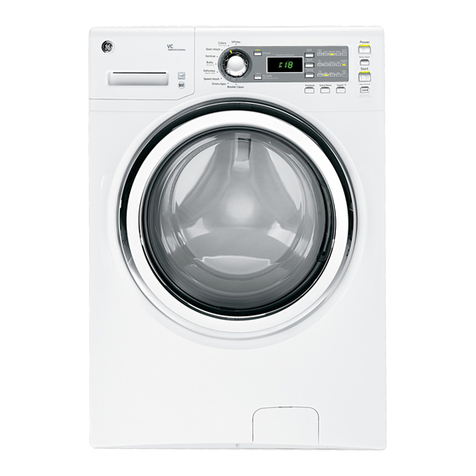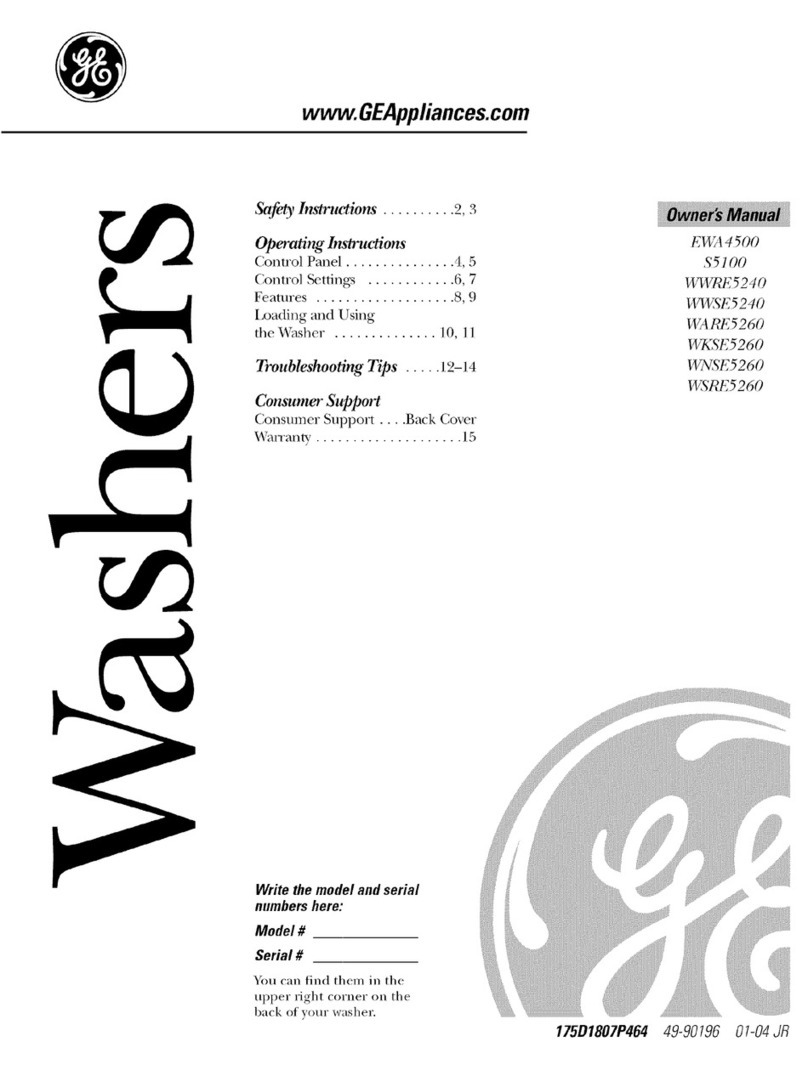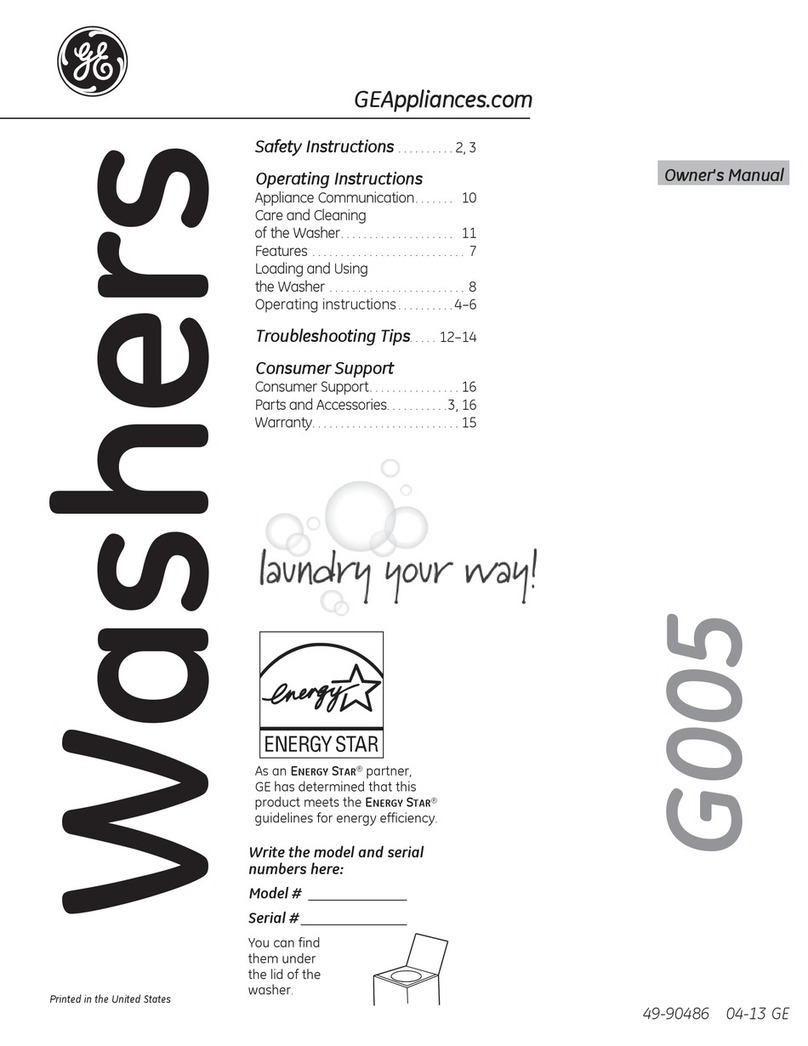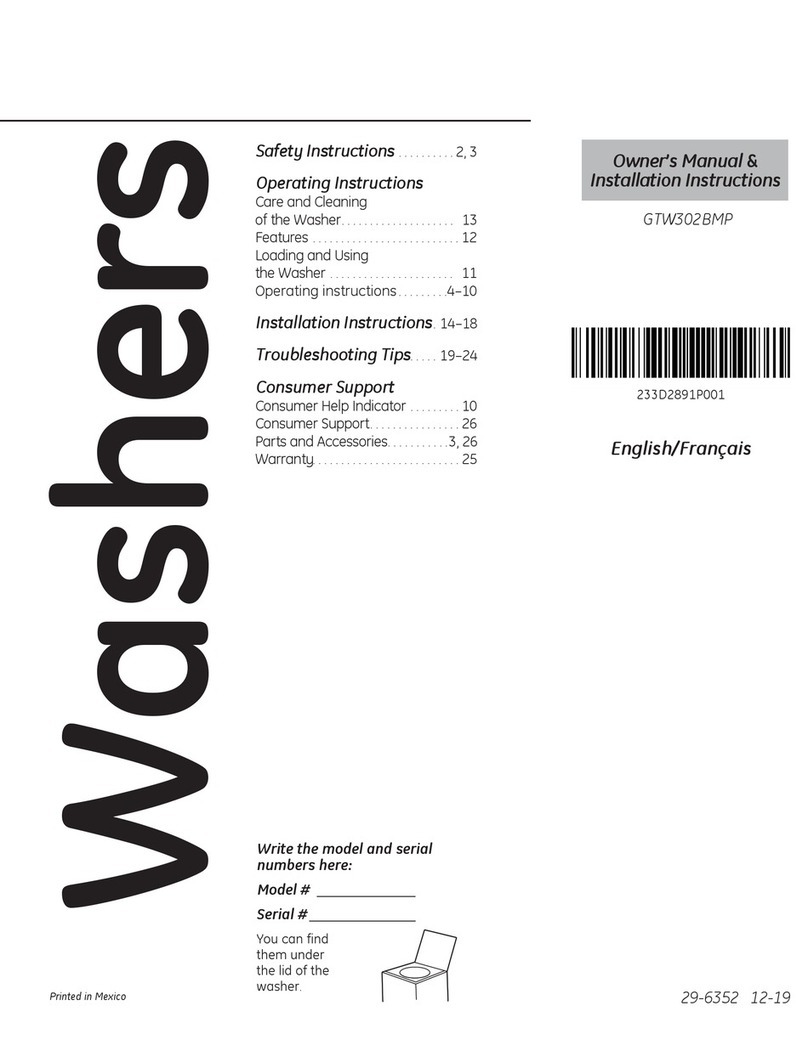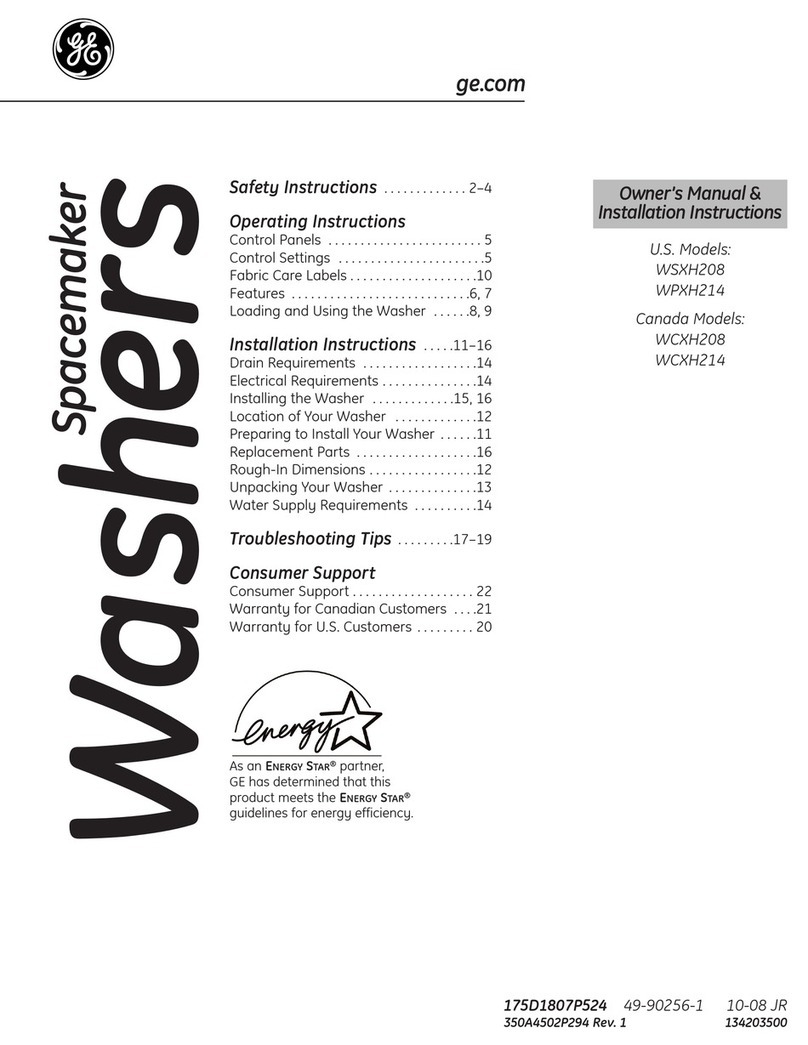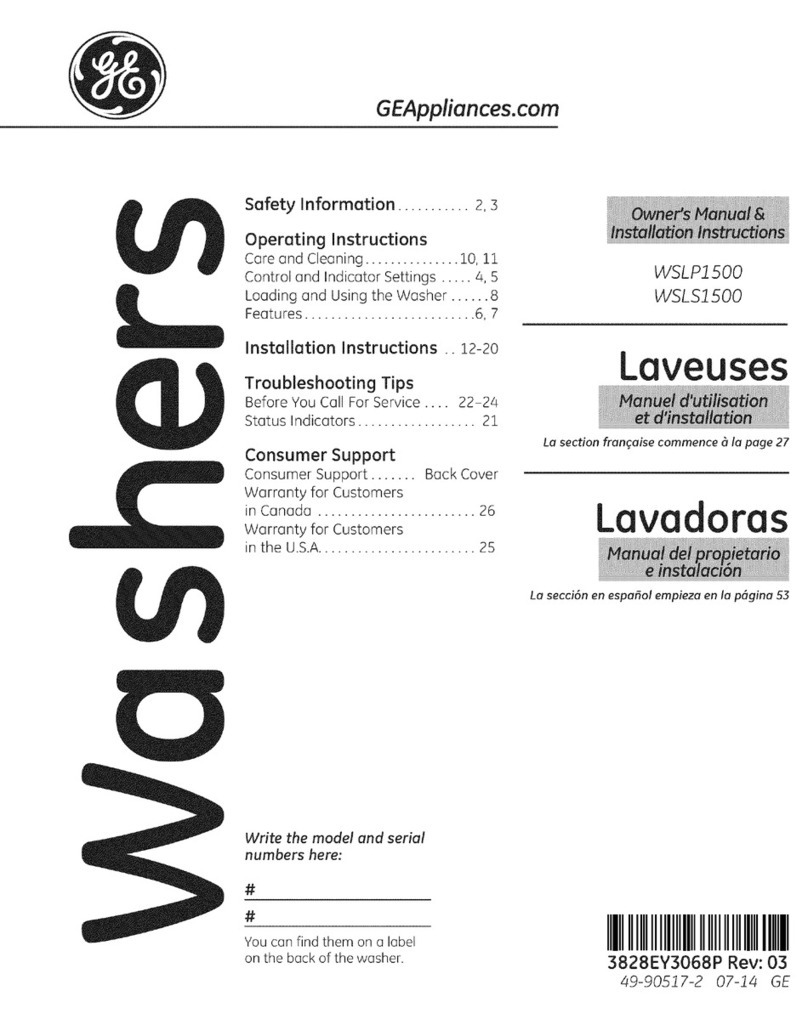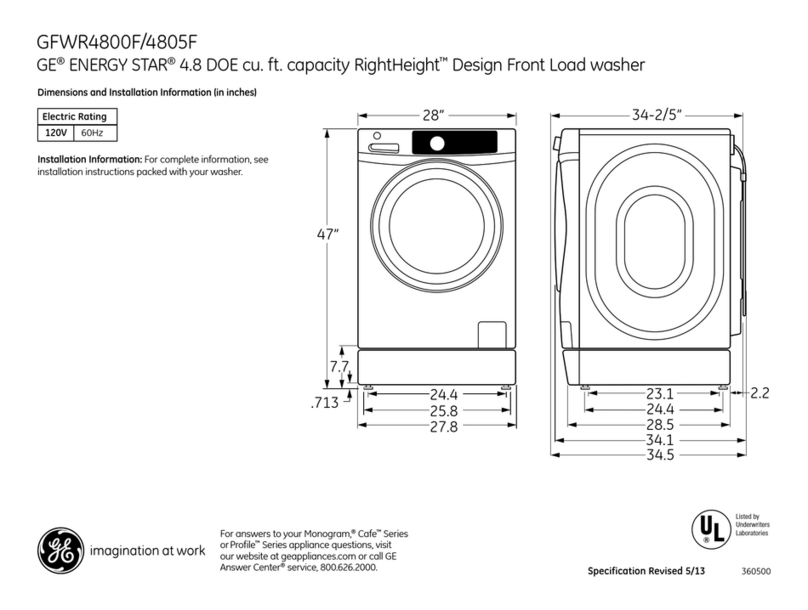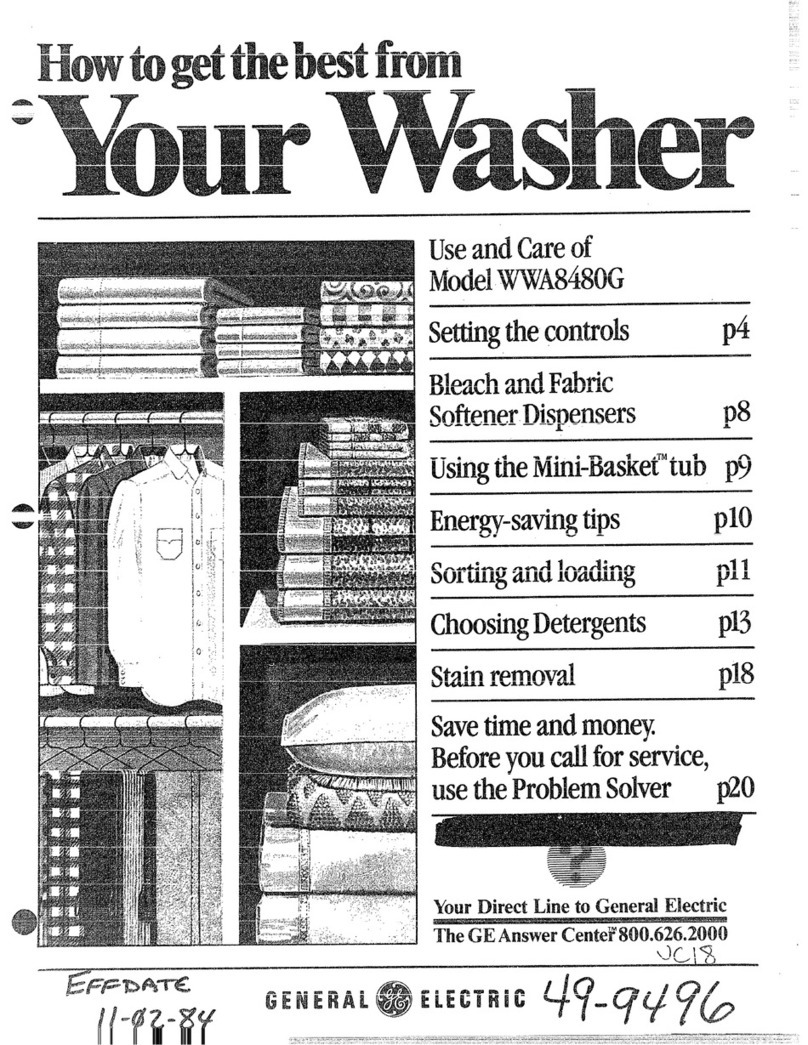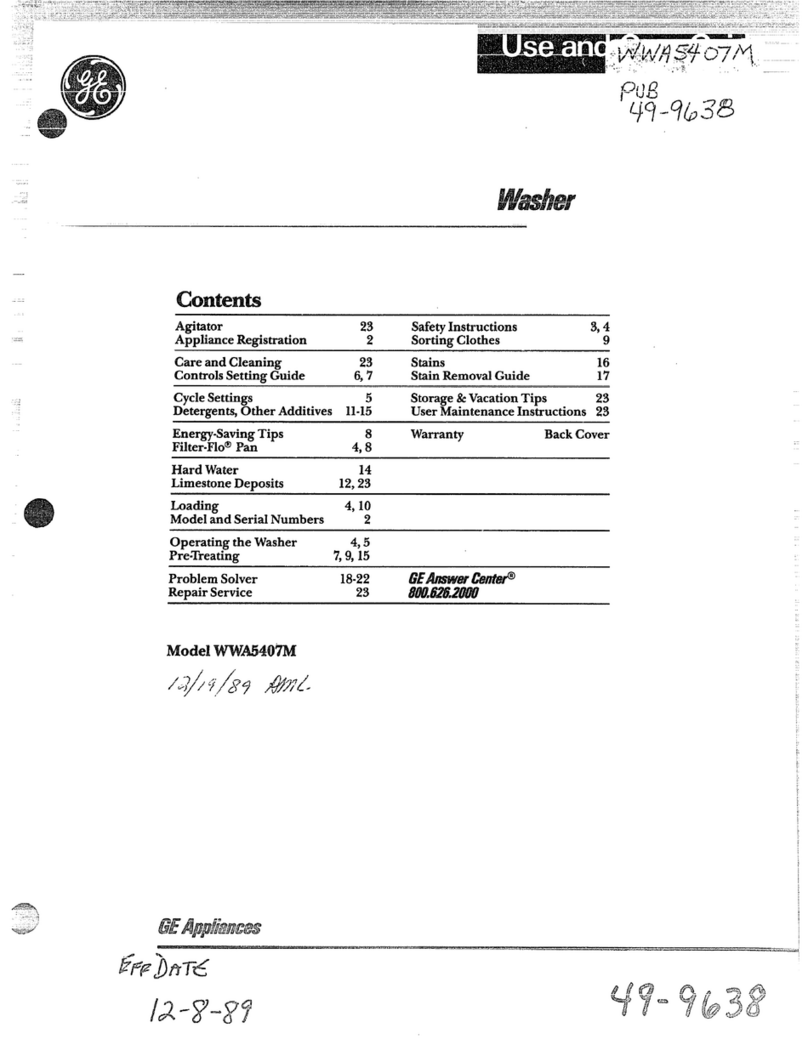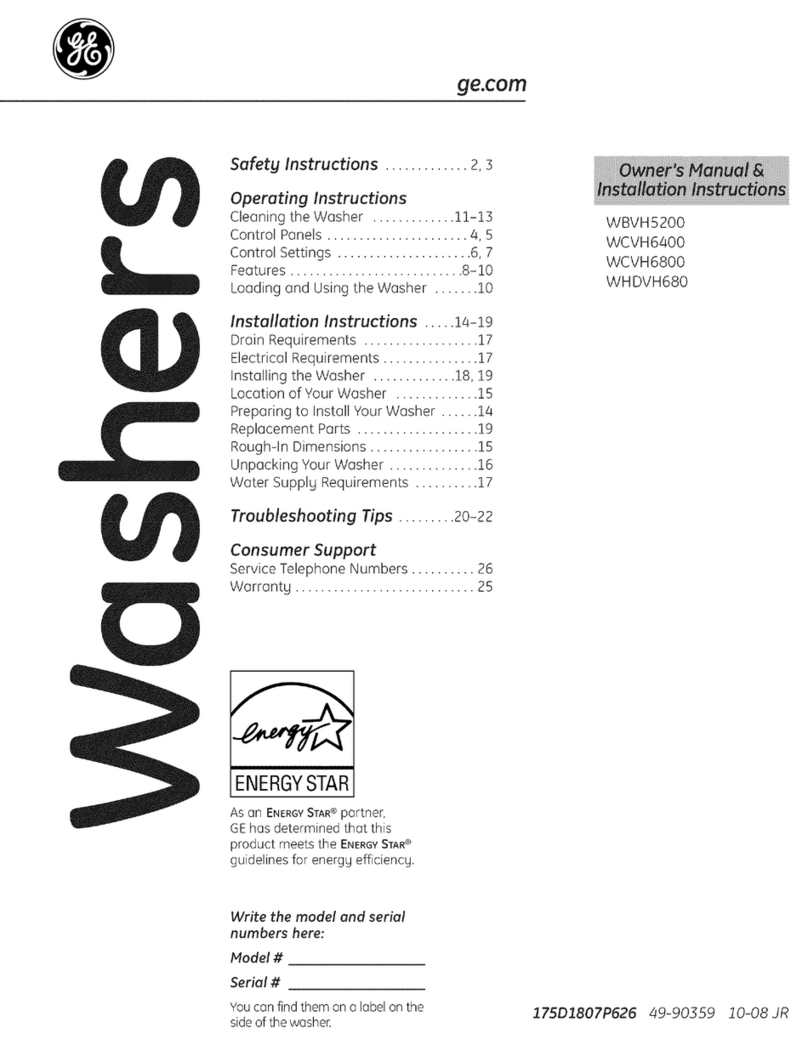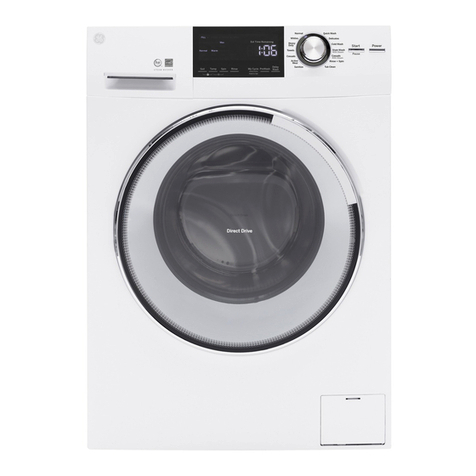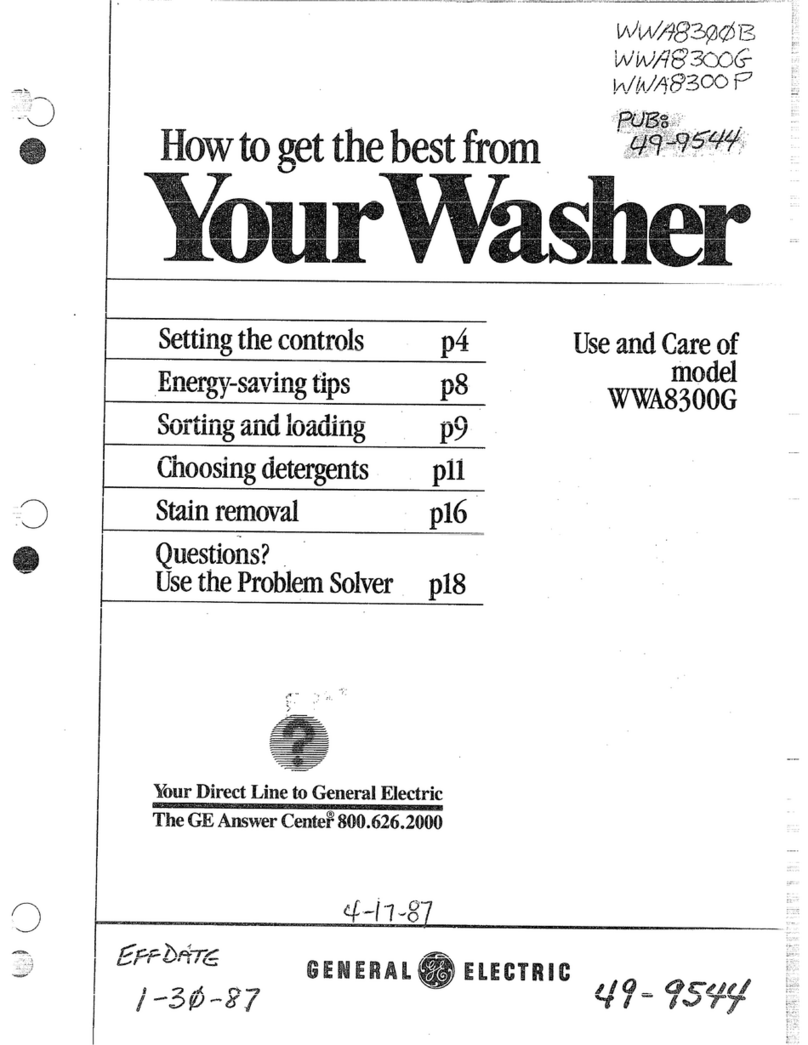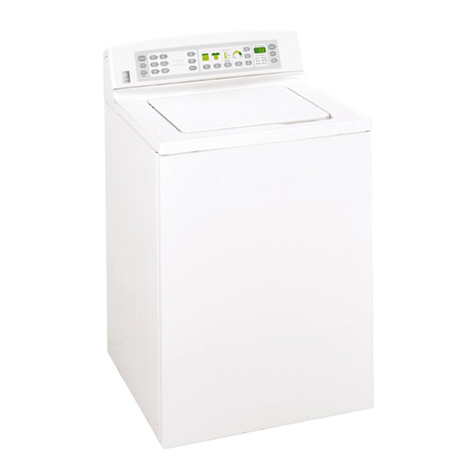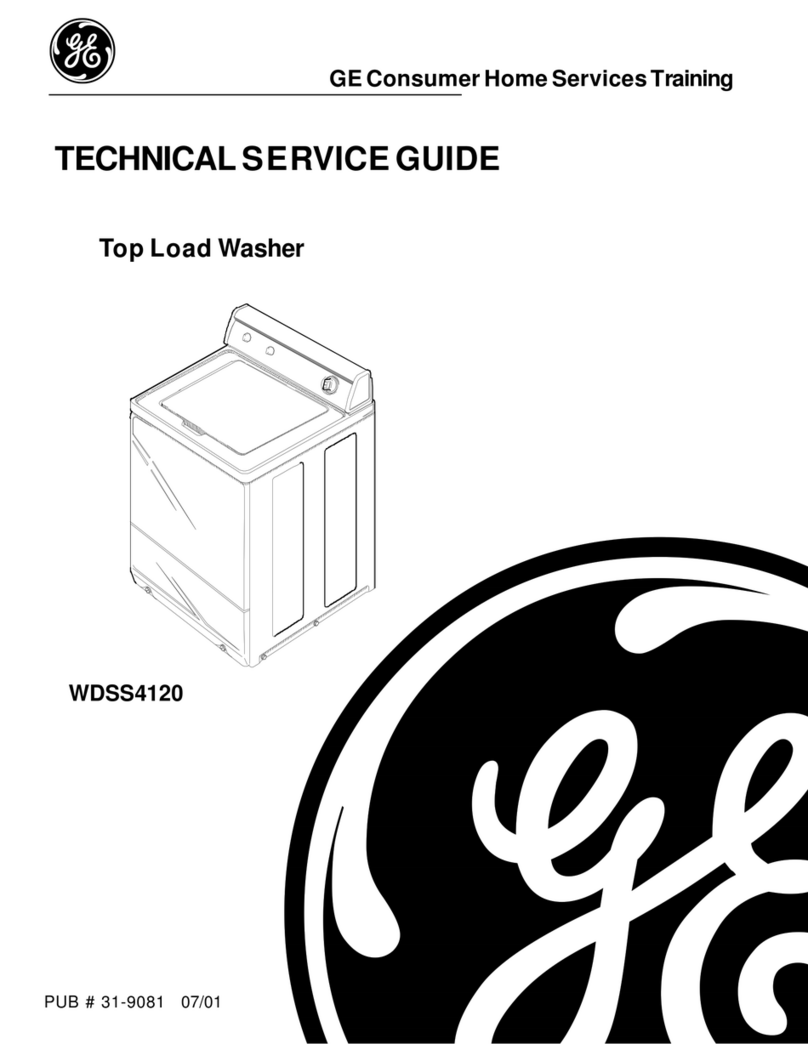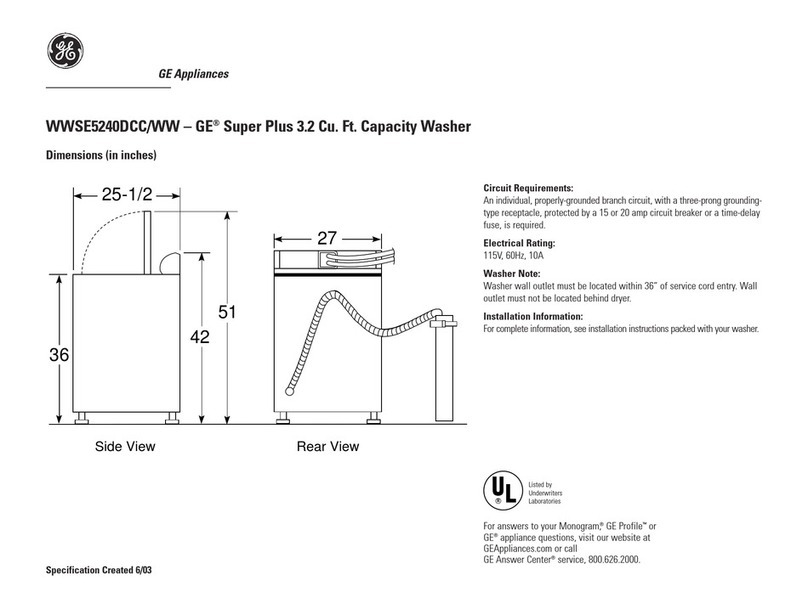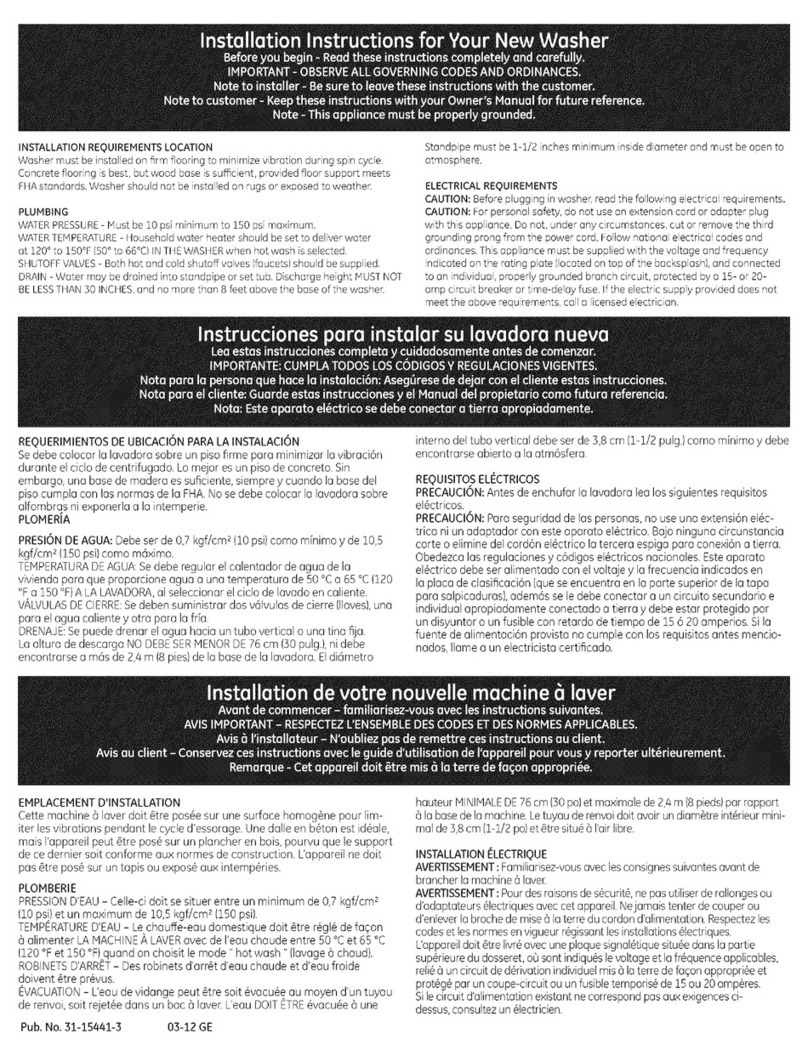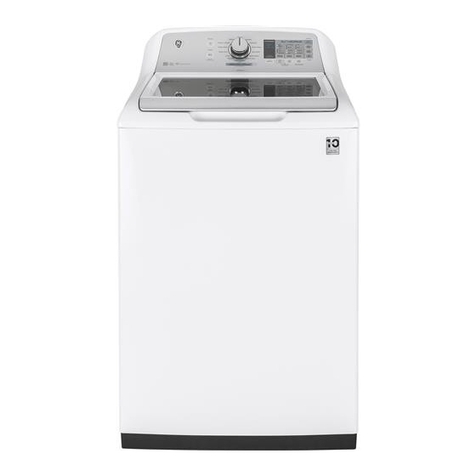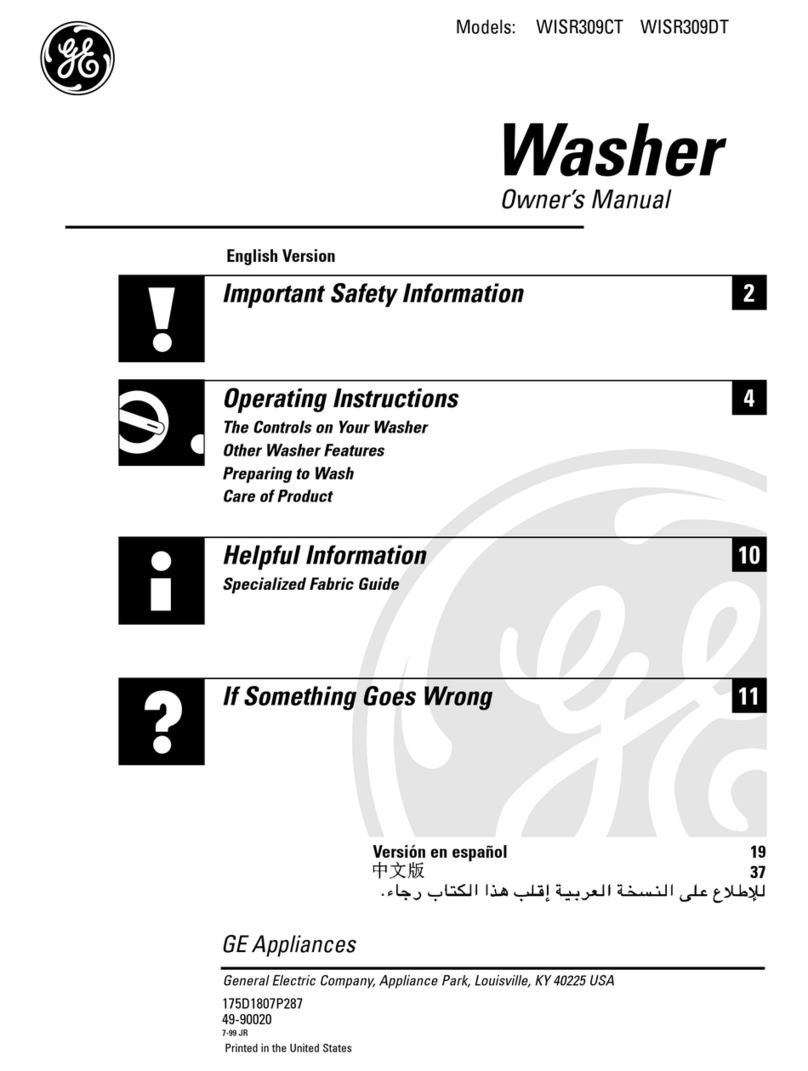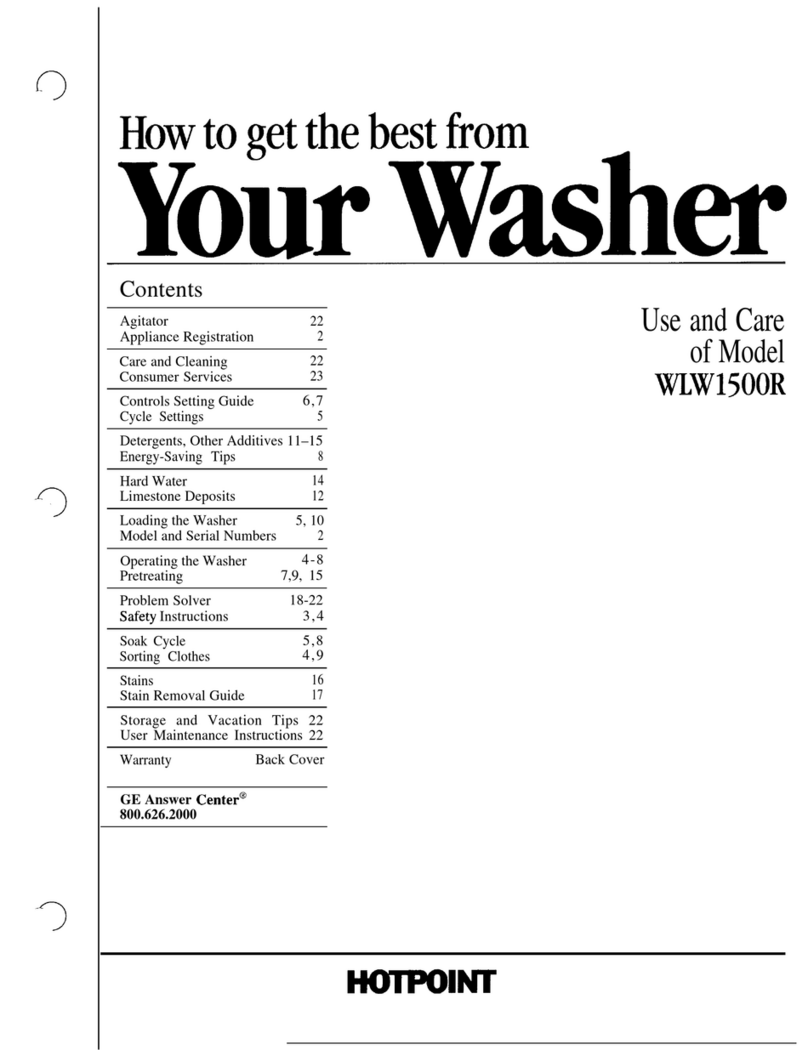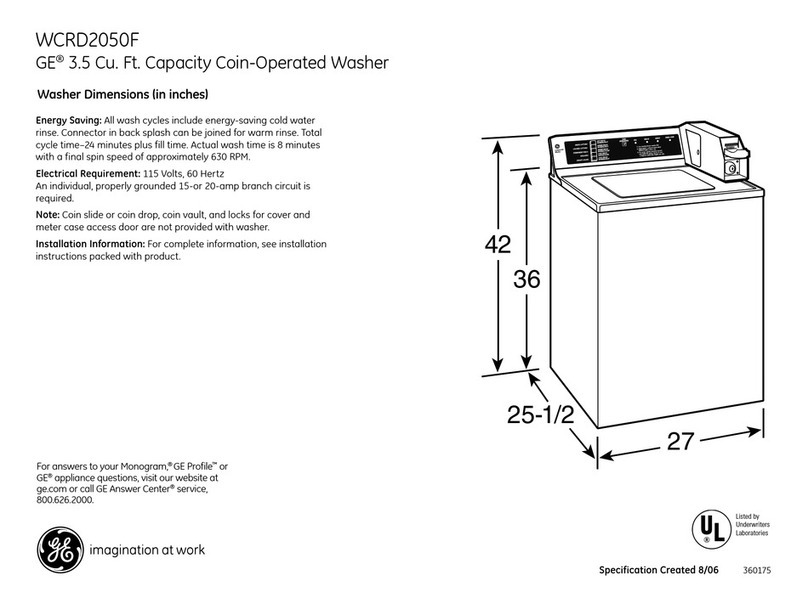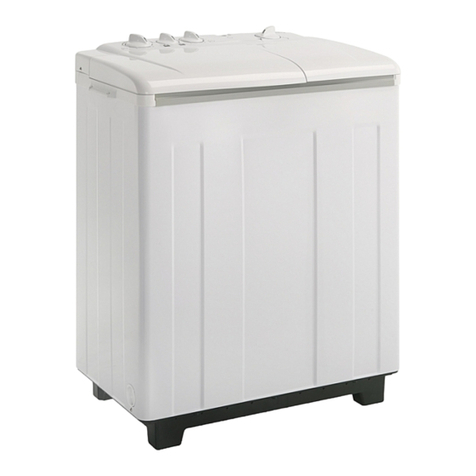
WATER Possible Causes What To Do
Water level seems low This is normal • Water may not cover the top level of the clothes.
This is normal for this high efficiency washer.
Water fills and drains Drain stand pipe is too low • The drain stand pipe must be above 30”.
at the same time
Too many suds Too much detergent • Measure your detergent carefully. Use less soap if you have
soft water, a smaller load or a lightly soiled load.
Type of detergent • Switch to HE detergent.
Soft water • Try less detergent.
Water leaks Using too much detergent • Use less detergent. Use less soap if you have soft water,
in washer a smaller load or a lightly soiled load.
Type of detergent • Switch to HE detergent.
Fill hoses or drain hose is • Make sure hose connections are tight at faucets and
improperly connected rubber washers are installed. Make sure end of drain hose
is correctly inserted in and secured to drain facility.
Household drain may • Check household plumbing. You may need to call
be clogged a plumber.
Drain hose is loose • Make sure drain hose is fully seated in back of washer and
that the two retaining screws are fully seated.
Drain hose rubs on wall • Make sure drain hose does not make contact with the wall.
May cause excessive wear on the hose.
Constant water pressure • Tighten hoses at the faucets and turn the water off after each use.
to the fill hoses at the • Check condition of the fill hoses; they should be replaced
water source every 5 years.
Water temperature Cooler water temperatures • New laundry detergents have been formulated to work
seems incorrect provide improved energy with cooler water temperatures without affecting wash
efficiency performance.
Water supply is turned off • Turn both hot and cold faucets fully on and make sure
or improperly connected hoses are connected to correct faucets.
Water valve screens are • Turn off the water source and remove the water connection
stopped up hoses from the upper back of the washer. Use a brush or
toothpick to clean the screens in the machine. Reconnect
the hoses and turn the water back on.
Cool/Cold Water when • This is normal. PerfecTemp senses water temperature and
selecting Hot optimizes for best results. Cold water is added periodocally
when hot is selected.
House water heater is • Make sure house water heater is delivering water at
not set properly 120°F–140°F (48°C–60°C).
Water pumped out before Lid lifted or cycle was put in • Reset cycle.
cycle is complete pause for over 24 hours
Water won’t drain Drain hose is kinked or • Straighten drain hose and make sure washer is not sitting on it.
improperly connected • Top of drain outlet should be less than 6 ft (1.8 m)
above floor.
Washer pauses during The PREWASH Cycle • This is normal. The washer alternates between agitate and
wash cycle was chosen soak during these cycles to get your clothes cleaner with
less wear.
Washer pauses during This is normal • The washer may pause during the spin cycle to remove
spin cycle soapy water more efficiently.
Washer does not fill This is normal • The lid must be closed for washer to fill or operate.
when lid is open
Troubleshooting Tips
Save time and money! Review the charts on the following pages,
or visit GEAppliances.com. You may not need to call for service.
Before you call for service…
10
